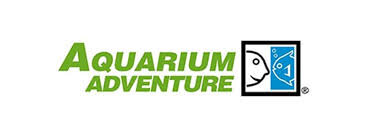Aquarium Water Testing Pt. 1
New Aquarium:
In a new aquarium, Ammonia and Nitrites are normally present and necessary to start growing the beneficial bacteria. However, any levels of Ammonia and Nitrites need to be reduced to minimize damage to the fish. (Choose hardy, beginner fish if cycling the aquarium with fish, White Clouds, Barbs, Danios, Black or White Skirt Tetras). The ONLY way to reduce ammonia/nitrites is to add biomaterial.
Established Aquarium:
If Ammonia and Nitrites are present in an established aquarium it is normally caused by adding too many fish at one time and/or over feeding. If present in an established aquarium, then there is not enough bacteria for the bioload. Causes? Overfeeding (generally unlikely in an established aquarium), Overcrowding (also doesn’t happen often in an established aquarium), Too big of a water change (50% or more), sterilization of bio filter media (replaced, not working, or cleaned improperly), & Use of an antibiotic, are usually the culprits.
Ammonia(ppm)
Reducing Ammonia – Any ammonia in an aquarium is dangerous unless it exists under low pH which will not be a problem unless the pH increases.
Adding bacteria is the only solution: the trick is to know how much (based on the tank water volume and the bioload of fish). This can be accomplished by:
· Adding “Conditioned water” from an existing, established aquarium
· Biomaterial from a filter on an established aquarium
· Actual “live” bacteria (refrigerated w/ an exp. Date)
· Allow the aquarium to go through the cycle process of growing and establishing bacteria w/ hardy fish
Doing partial water changes using “tap” water (which is essentially sterile water) will not help reduce ammonia levels, it will only prolong an unhealthy aquarium water environment.
Nitrite (ppm)
Also, any level can be problematic for fish. 2nd stage of the nitrogen cycle, Indicates that bacteria is being established and the tank (filter) is going through a cycle period.
Adding bacteria is the only solution: the trick is to know how much (based on the tank water volume and the bioload of fish). This can be accomplished by:
· Adding “Conditioned water” from an existing, established aquarium
· Biomaterial from a filter on an established aquarium
· Actual “live” bacteria (refrigerated w/ an exp. Date)
· Allow the aquarium to go through the cycle process of growing and establishing bacteria w/ hardy fish
Doing partial water changes using “tap” water (which is essentially sterile water) will not help reduce ammonia levels, it will only prolong an unhealthy aquarium water environment.
